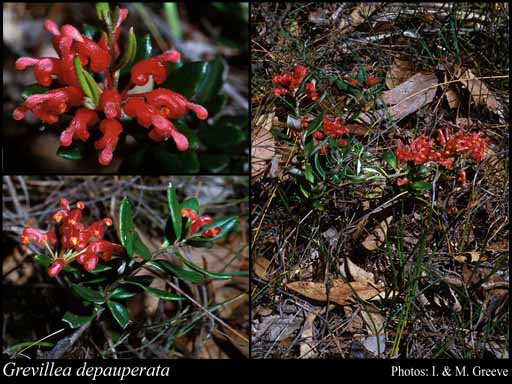- Reference
- Suppl.Prodr.Fl.Nov.Holl. 21 (1830)
- Conservation Code
- Not threatened
- Naturalised Status
- Native to Western Australia
- Name Status
- Current
Spreading, sometimes straggly, or prostrate shrub, 0.1-0.8 m high. Fl. red, Mar to Oct or Dec. Laterite, gravel, clay loam, grey sand over laterite.

Scientific Description
Shrubs, 0.8 m high; branchlets hairy, not glaucous. Leaves alternate, 10-35 mm long, 5-8 mm wide, hairy, on the adaxial or abaxial surface, the hairs curled; lamina flat, widest around the middle, entire, the margins recurved. Inflorescences terminal, orange or red; pedicels 5-7 mm long. Perianth 7-11 mm long; tepals some joined and some free after flower opens, hairy, simple-hairy; ovary hairy, stipitate, the stipe 1-1.5 mm long; pistil 10-15 mm long, orange or red, pollen presenter lateral, style hairy. Follicles glabrous, not viscid, dehiscent, 15 mm long. Flowers in May, June, July, August, September or October. Occurs in the South-west (SW) Botanical Province(s), in the Jarrah Forest (JF), Warren (WAR) or Esperance Plains (ESP) IBRA subregion(s).
Distribution
- IBRA Regions
- Esperance Plains, Jarrah Forest.
- IBRA Subregions
- Fitzgerald, Southern Jarrah Forest.
- IMCRA Regions
- WA South Coast.
- Local Government Areas (LGAs)
- Albany, Cranbrook, Denmark, Gnowangerup, Manjimup, Plantagenet.